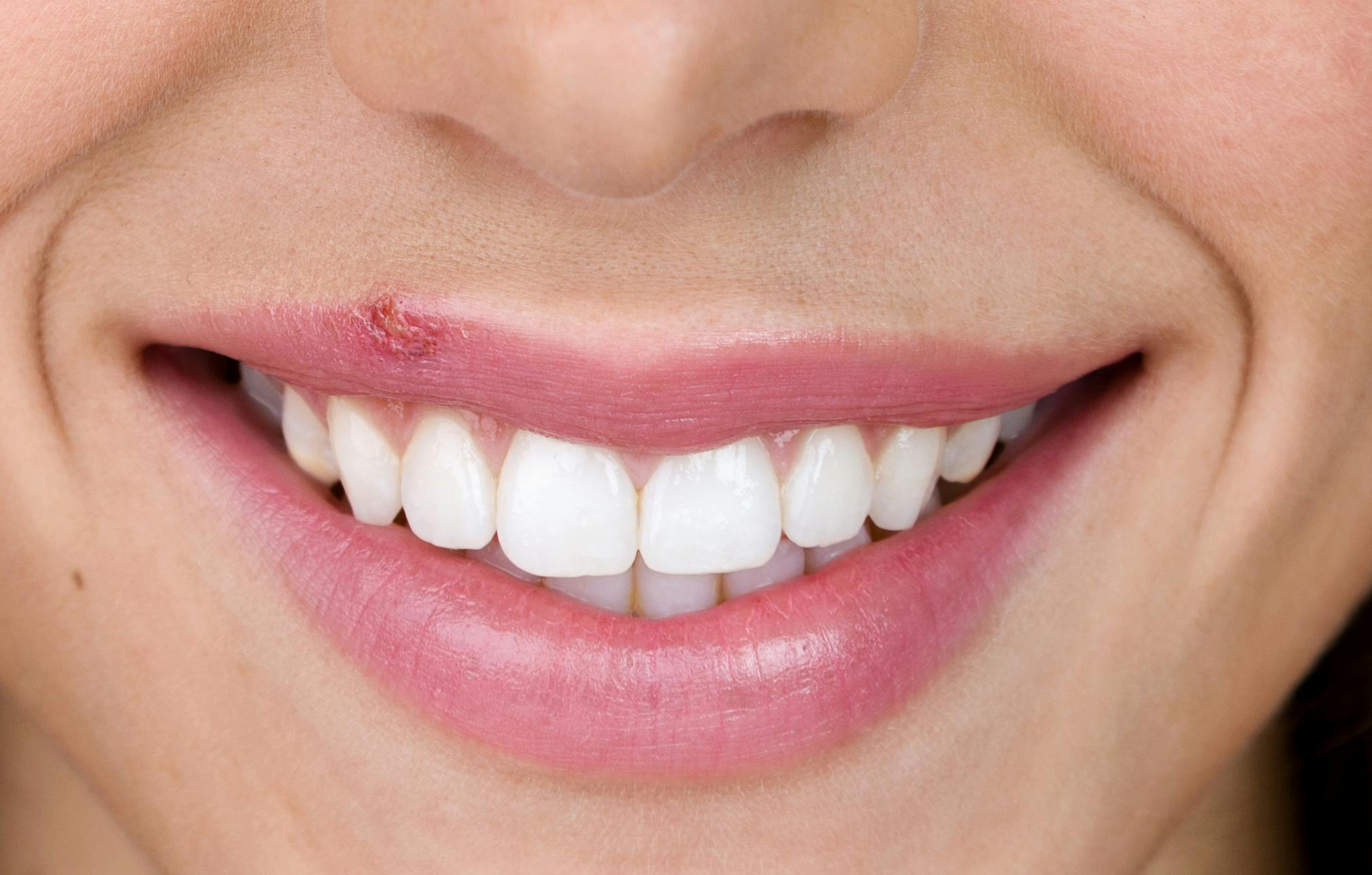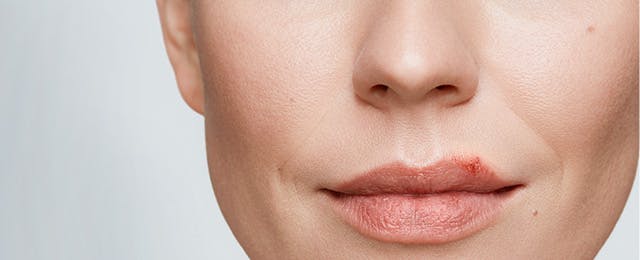What Are Cold Sores?
Cold sores are small, fluid-filled blisters that develop on the lips or around the mouth. They are unsightly but usually harmless, healing on their own within a couple of weeks. Caused by the herpes simplex virus (HSV-1), colds sores are incredibly common. Nearly four billion people are infected with the virus globally.i While some people experience recurring cold sores, others never show any symptoms.
Read our guide to discover what a cold sore is, what it looks like and what you can do about them.
What Is a Cold Sore?
When people describe themselves as having a cold sore, they’re usually referring to the blisters caused by the herpes simplex virus 1 (HSV-1). Also called fever blisters, a cold sore is simply a symptom of the virus hijacking healthy cells.
What Causes a Cold Sore?
HSV-1 is highly contagious, with 67 percent of the world population under the age of 50 infected. Once you are infected, the virus never leaves your body.ii Although most people aren’t exactly sure when they first encountered the virus, it’s usually contracted in early childhood, even if it did not manifest as a visible cold sore.
Once you have the virus, you may show no symptoms until the virus is ‘triggered’. At this point, the virus becomes more active and this is when you’ll suffer with cold sore outbreaks. Cold sore triggers include colds, flu and fever – hence the other common name for cold sores, fever blisters – as well as stress, fatigue, sunshine and wind.iii
Some people, however, may carry the virus without ever showing symptoms – in other words, they never have a cold sore – and so may pass the virus on to others unknowingly.
What Does a Cold Sore Look Like?
A cold sore can start as a tingling, itching or burning sensation on your lip area. It may then develop into a small, inflamed red patch, where a blister-like top can form. This may break open and weep clear liquid, which then forms hard crusts. Once the crusts have dried out and fallen off, recovery is nearly complete. Once you’re completely healed, the area affected will return to normal.`

Where Do You Get Cold Sores?
Most people get cold sores on their lips, but it is possible to get cold sores on your nose, your eyes and your genitals too.
Can You Get a Cold Sore in Your Mouth?
Many people think they have a cold sore on their tongue or inside their mouth because canker sores can look a little like a cold sore blister on your lip. But canker sores only occur inside the moist areas of the mouth – on your gums, inner lips and tongue – while cold sores only appear on the outer edge of the lip or on the lip itself.iv
How Do You Get Cold Sores?
You can transmit and become infected by the HSV-1 virus by touching others, especially through kissing, as the virus is passed on through saliva and direct contact with the lips. You can also contract the virus by sharing infected items such as eating utensils or by sharing cosmetics.vRemember that someone may be infected without showing symptoms.
Are Cold Sores Contagious?
Yes, cold sores are extremely contagious. You can become infected with the virus through kissing, touching your fingers to your mouth or eyes (if your fingers have become infected with the virus from someone else, for example), and by sharing infected items. Although the virus doesn’t pass through the air, it has been shown to survive on hard surfaces.
Make sure you follow good hand-washing practices, washing with soap for at least 20 seconds and using hand sanitizer when needed. Avoiding close contact with those who have visible signs of the virus and not touching your mouth, eyes and nose are all ways you can help protect yourself against contracting the virus and passing it on to othersvi.
How to Get Rid of Cold Sores?
When it comes to fighting a cold sore, you’ll hear advice on everything from home remedies to lip balm cures. Sorting the cold sore myths from the facts will help you pick the best treatment to shorten your recovery time and allow your skin to heal quickly. A cold sore medicine you can get over the counter without a prescription is Abreva® Cream. It contains the only FDA-approved OTC ingredient that has been shown to prevent HPV from replicating by blocking the virus from entering into healthy cells.*
How Long Do Cold Sores Last?
In most cases, cold sores heal by themselves within 10 to 14 days. However, by using Abreva® Cream you can reduce your recovery time to as little as 2½ days **.
What Is a Cold Sore – Next Steps
While cold sores are an unpleasant and potentially unsightly illness to experience, they are unlikely to cause lasting harm. Using a cold sore treatment such as Abreva® Cream to minimize your recovery time not only makes it easier for you to go about your life as normal, it also helps reduce the time you are at your most contagious, with visible blisters.
Apply as directed as soon as you feel a tingle to reduce your recovery period to as little as 2½ days.*** Find out more about how Abreva® Cream works and where to buy Abreva® Cream.
SOURCES
- i. Herpex Simplex Virus. World Health Organization. https://www.who.int/news-room/fact-sheets/detail/herpes-simplex-virus. Accessed 11/13/2019.back to content↵
- ii. Herpex Simplex Virus. World Health Organization. https://www.who.int/news-room/fact-sheets/detail/herpes-simplex-virus. Accessed 11/13/2019. back to content↵
- iii. Cold Sore. Mayo Clinic. https://www.mayoclinic.org/diseases-conditions/cold-sore/symptoms-causes/syc-20371017. Accessed 11/13/2019. back to content↵
- iv. What’s the Difference Between Canker Sores and Cold Sores? Healthline. https://www.healthline.com/health/canker-sore-vs-cold-sore. Accessed 11/13/2019. back to content↵
- v. Cold sore. Mayo Clinic. https://www.mayoclinic.org/diseases-conditions/cold-sore/symptoms-causes/syc-20371017. Accessed 11/13/2019. back to content↵
- vi. Cold sore. Mayo Clinic. https://www.mayoclinic.org/diseases-conditions/cold-sore/symptoms-causes/syc-20371017. Accessed 11/13/2019. back to content↵
By clicking the link(s) above, you will be taken to an external website that is independently operated and not managed by Haleon. Haleon assumes no responsibility for the content on the website. If you do not wish to leave this website, do not click on the links above.




